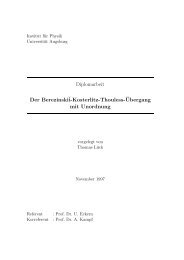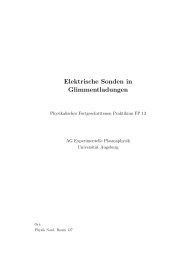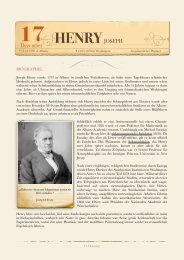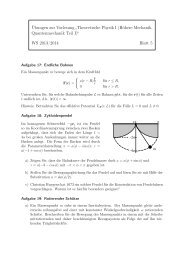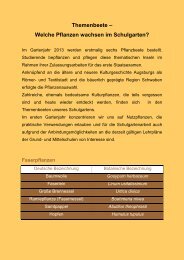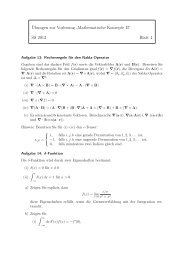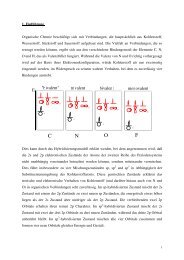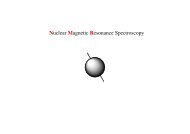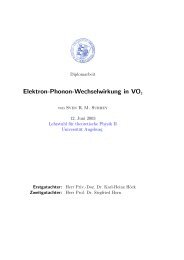Numerical Renormalization Group Calculations for Impurity ...
Numerical Renormalization Group Calculations for Impurity ...
Numerical Renormalization Group Calculations for Impurity ...
Create successful ePaper yourself
Turn your PDF publications into a flip-book with our unique Google optimized e-Paper software.
4.3. Structure of the quantum critical points 39<br />
ε<br />
3<br />
...<br />
p=3<br />
0<br />
ε<br />
ε<br />
1<br />
−1<br />
p=1<br />
p=−1<br />
ε −3<br />
...<br />
p=−3<br />
Figure 4.5: Single-particle spectrum of the free conduction electron chain<br />
Eq. (A.12). The ground state is given by all the levels with p < 0 filled.<br />
and<br />
∑<br />
≡<br />
p<br />
p=N<br />
∑<br />
p=−N,p odd<br />
. (4.21)<br />
Note that an equally spaced spectrum of single-particle levels is only recovered<br />
in the limit Λ → 1; see Fig. 6 in (Bulla, Hewson and Zhang 1997) <strong>for</strong> the case<br />
r = 0.<br />
The RG analysis of Section 4.2 tells us that the critical fixed point is perturbatively<br />
accessible from the LM one using a Kondo-type coupling as perturbation.<br />
We thus focus on the operator<br />
H ′ N = α(r)f(N) ⃗ S imp · ⃗s 0 , (4.22)<br />
with the goal to calculate the many-body spectrum of the critical fixed point via<br />
perturbation theory in H N ′ <strong>for</strong> small r. The function α(r) contains the fixedpoint<br />
value of the Kondo-type coupling, and f(N) will be chosen such that H N<br />
′<br />
is exactly marginal, i.e., the effect of H N ′ governs the scaling of the many-particle<br />
spectrum itself. The scaling analysis of Section 4.2, Eq. (4.8), Eq. (4.10), suggests<br />
a parametrization of the coupling as<br />
α(r) = µ−r<br />
ρ 0<br />
αr, (4.23)<br />
where ρ 0 , is the prefactor in the density of states, and µ is a scale of order of the<br />
bandwidth-such a factor is required here to make α a dimensionless parameter.<br />
Thus, the strength of perturbation increases linearly with r at small r (where<br />
µ −r /ρ 0 = D + O(r) <strong>for</strong> a featureless |ω| r density of states).<br />
The qualitative influence of the operator ⃗ S imp ·⃗s 0 on the many-particle states<br />
has been discussed in general in (Gonzalez-Buxton and Ingersent 1998) <strong>for</strong> finite



